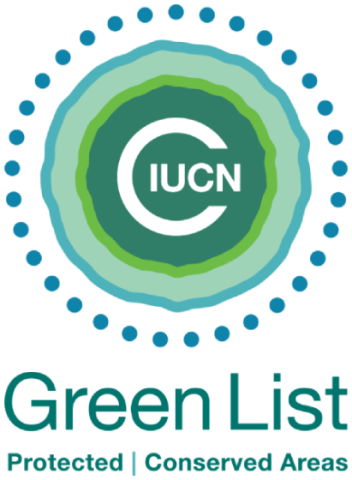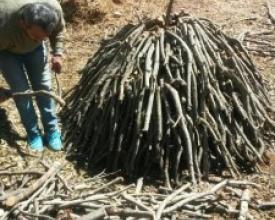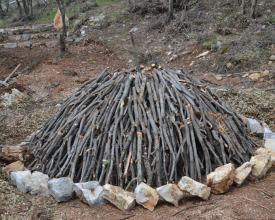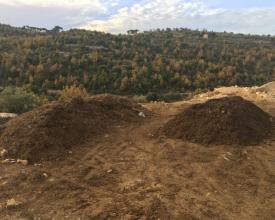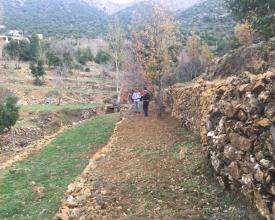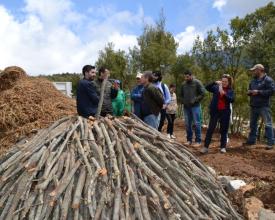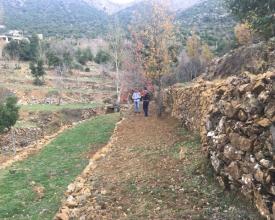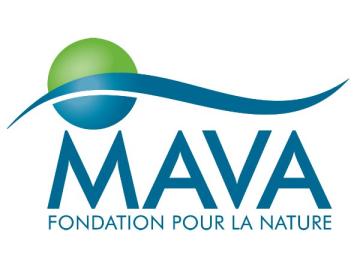
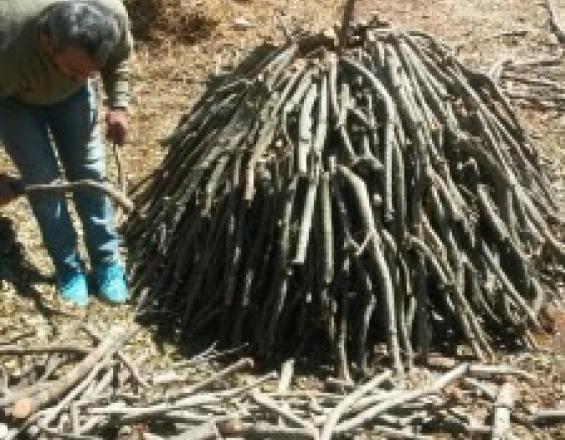
The Shouf Biosphere Reserve designed and implemented its own Forest Landscape Restoration Project, based on IUCN definition "the ongoing process of regaining ecological functionality and enhancing human well-being across deforested or degraded forest landscapes. It is more than just planting trees – it is restoring a whole landscape to meet present and future needs and to offer multiple benefits and land uses over time. aiming at restoring cultural practices and developing new methods to improve the use of local raw materials in a sustainable way." This led to the production (with a full marketing plan) of briquettes, distributed to the local communities for heating, the production of compost to find alternative sources of organic fertilizer for local farmers, the restoration of abandoned stonewall terraces that act as firebreaks reducing the risk of fire spread, and providing access and water for fire-fighting, charcoal production, and grazing as a method of controlling re-sprouting.
Contexto
Défis à relever
Due to its geographic location, the Mediterranean environment is an unstable one, facing recurrent abrupt changes and limitations over time. The main challenge regarding climate change in the Mediterranean region will be the increase in frequency, magnitude and severity of extreme weather events: drought periods, heat weaves, annual rainfall concentrated in short periods of heavy precipitation events, strong winds. The consequences of such changes can be large-scale forest fires, massive forest dieback and pests, the expansion of invasive species, and large-scale floods leading to land degradation and desertification, and the massive loss of native flora and fauna. Unsustainable use of resources is another challenge: the illegal logging of trees for heating- with the impact of the ongoing economic crisis, unsustainable use of ground and surface water, in addition to overgrazing caused by the decline of traditional transhumance systems and land tenure issues.
Ubicación
Procesar
Summary of the process
The project identified a basket of interventions aimed at sustainable environmental management within the Reserve. They include both the improved management of ecological habitat under traditional use, and improved use of resources. The building blocks complement each other and here is a description of how they work: The project undertook some tests involving the thinning that produced excellent results, clearing the forest structure and thereby encouraging the growth of more vigorous and healthier remaining shoots. The size of the annual thinned area was determined. Professional chainsaws were used for this purpose. The first step was the thinning of the trees, which is a manual operation, followed by the shredding with special machines. The shreds would then go into composting, charcoal production, or the fabrication of the briquette. The marketing plan is needed for the development of the production. As for the restoration of the stonewall terraces, it is an adjacent activity since these terraces act as firebreaks reducing the risk of fire spread, and providing access and water for firefighting.
This is how the comprehensive solution is achieved!
Building Blocks
Grazing to Control Re-Sprouting and Prevent Forest Fires
To prevent the excessive re-sprouting of the thinned oak stands, and hence a higher chance of forest fires, the project recommended grazing the area with herds of goats during the years following the cutting operations as a mixture of silvopastoral interventions (oak stand thinning and grazing control) . All of these activities will eventually take pressure off the Cedar trees in the core zone of the Reserve.
Enabling factors
Through understanding the grazing pressure, livestock numbers were managed by number and season so that the ground surface and habitat were not degraded.
Lesson learned
One of the major lessons learned related to this block is the complementarity of nature: we were designing a project related to forest management, and one of the successful solutions was to resort to goats to prevent re-sprouting. It allowed the understanding of the silvopastoral system by bringing the forest and livestock management system back into balance with each other.
Compost Production to Find Alternative Sources of Organic Fertilizer
Compost production aimed to find alternative sources of organic fertilizer for local farmers. It involved the development of composting units in some central areas of the SBR and in private gardens. This required practical training of landowners and the development of Composting is a biological process by which microorganisms decompose organic matter. It could be done in two ways: anaerobic composting and aerobic composting. Aerobic composting involves organisms that need oxygen for their living, while anaerobic composting involves organisms that can survive in the absence of oxygen. The key condition for any composting design is the type of composting that must be used. The aerobic composting, for example, necessitates the entrance of oxygen to the composting pile. The process adopted in this project is aerobic composting. The raw materials used are remains of pruning forest trees, adding cow and chicken manure from farms in surrounding villages. In addition to making use of the shreds, this activity yields an alternative organic fertilizer. Some educational materials could eventually be developed. It is worth noting that two commercial shredding machines were bought to enable cutting the woody material.
Enabling factors
Make the necessary pre-testing then shred all the material other than the animal manure, and mix with the bobcat. Divide the plot into piles (each pile is equivalent to approximately to the material of 3 working days. Turn the first pile over, turn another pile over the first one, and fill the empty space again. Each pile is to be turned to the area next to it and replaced by the pile just before it. Continue until the piles are turned at least 5 times. Move the finished compost to the storage area, ready for distribution
Lesson learned
Testing and analysis have been very important in the process, hence the necessity of resorting to experts.
Another lesson is that people got gradually interested in the activity when they realized that it was useful for them, and became fully engaged. The project, which started as a small testing area in one village, is now replicaated in at least two others.
Traditional Charcoal Production for Heating and Generating Rural Employment
Making charcoal is a rural activity that is gradually being lost and could be of great value for rural employment if revived. Charcoal has a number of uses: it can be burned directly in traditional stoves, as mix for briquettes, or for the popular barbecues. Charcoal has a higher calorific value (about 7,500 kcal/kg almost double the briquettes that are currently being manufactured) and can increase the quality of the briquettes. However, this process should be studied and tested in the production plant before commercial production is started.
Enabling factors
The following steps outline the manual production of lava stone charcoal from small branches: Pile all cuttings and branches into sheaves. Once the area has been cleared and the sheaves are in place, start the fire on the first sheaf. More sheaves are piled around the lava stones using a shovel instead of water. Before branches become dust, put out the fire with water and remove. A shovel is used for cooling the charcoal I, turning it over to separate the dust. Necessary precautions against fires should be taken.
Lesson learned
This was a pilot or demonstration of a traditional technique, but is will not be sustainable without a sustainable supply of small size branches from various trees, mainly oaks. This requires the adoption of seasonal thinning periods.
Charcoal production with an oven was the next step in this process, but the cost turned out to be very high, so the idea was postponed, if not discarded.
Restoration of Stonewall Abandoned Terraces
The term “dry stone” indicates how the stones constituting the terrace retaining wall are put in place without the use of binders. The wall has many benefits such as wind protection for some types of crop, while preserving the ecological niche of the numerous species of flora and fauna that colonize the stones, holes and soil of the terraces. It also serves as a passageway for farmers along the strip, interrupting the water runoff flow and favoring water accumulation and infiltration in the soil. It also plays an important role in preventing soil erosion. Abandoned terraces are widely distributed in the western slopes of the site located mainly at altitudes of 1000m to 1200m above sea level. Many terraces are abandoned with significant percentage of collapsed stonewalls that are colonized by natural vegetation forming different successional stages – from small scrub to very dense secondary forest stands. They also act as firebreaks, reducing the risk of fire spread, and providing access and water for firefighting.
Enabling factors
The operation begins with a field assessment to evaluate the rehabilitation needs and to collect data. A socio-economic assessment can also be useful. The first step is the restoration of the walls following the traditional methods. Then the planting process begins with soil management, selection and placement of crops, followed by maintenance and care of the crops and soil. This includes pruning that will feed into the process: composting, briquettes or charcoal
Lesson learned
Given the importance of the stonewall terraces and the successful restoration of several sites, the Shouf Biosphere reserve is currently preparing guidelines for this activity in collaboration with FAO and the Ministry of Agriculture.
Marketing Plan to Promote the Use of Briquettes
The aim for designing a marketing plan was to convert customers who used diesel oil to heat their homes and businesses into users of briquettes, firewood or charcoal for energy. The preference during the first stages was given to homes and businesses where the public could witness and try out the new biomass heating system. The document is attached to enable its adaptation to other situations.
Enabling factors
The Marketing Plan started with a study of the existing situation of the population in the area surrounding the site. This enabled the development of a marketing strategy for the Eco-Briquette that focused on the structuring and then enhancement of the value chain, packaging, cost, packaging & storage, and distribution. It also covered the communication and promotion of the product.
Lesson learned
The marketing plan was very useful for the early stages of the development of the product. It was based on real needs expressed by the local communities. What is needed now is a new business plan more adapted to the new needs, knowing that it will further develop the work and increase the production, with the aim of covering the whole region. The management of the plant, as included in the Marketing Plan, will be used as a basis for future activities
Impacts
The solution promoted a climate-resilient and economically viable use of the forest and agriculture biomass whose excessive load or post harvesting burning by farmers increased climate-related risks in the rural landscape, namely the forest fires that devastate large areas of Lebanon every year. It also contributed to the reduction of CO2 emissions from fossil energy consumption and the burning of forests and agriculture waste. The biomass management increased the capacity of forest ecosystems to adapt to climate change with a reduced competition for the scarce water resources in the thinned forest stands and healthier forest stands that can store higher quantities of carbon. Finally yet importantly, it reduced energy cost and increased local employment and local business around energy production.
That is to say that the development of biomass generates jobs in rural areas, which helps to keep the population in these areas and to promote industrial development.
Beneficiaries
The direct beneficiaries are the local population of 22 villages in the development zone of the PA, a rural mountainous area. They use traditional fuel stoves for heating, but can resort to illegal wood logging when fuel becomes too expensive.
Sustainable Development Goals
Story
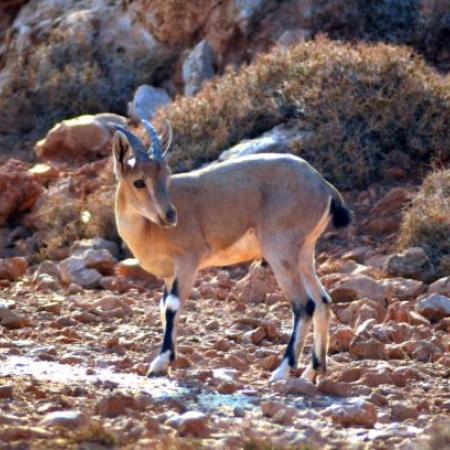
This was made possible thanks to the support of The Italian Cooperation in Lebanon and the MAVA Foundation. It was realized in cooperation with the Royal Society for the Conservation of Nature (Jordan), Wadi Rum Protected Area and Istituto Oikos (Italy).
The Nubian Ibex (Capra nubiana) is an iconic representative of the native original wildlife of the Middle East, which is now extinct in most of its former distribution range. The reintroduction of the Ibex in the Shouf Biosphere Reserve represented an important conservation milestone, which will provide numerous direct and indirect benefits not only in terms of landscape functionality and ecological processes, but also to boost the growth of a green economy in the region, to the benefit of local communities and the traditional agro-silvo-pastoral cultural values of the area and of Lebanon at large.
On October 13th, 2017, the first step of the reintroduction of the Nubian Ibex took place, with the translocation of a founding herd from Wadi Rum Protected Area to the Shouf Biosphere Reserve. A total of 12 Ibex - 8 females and 4 males - were separated from their mates and kept for some time in a fenced enclosure (quarantine). The ability of the selected animals to bear the transfer process was evaluated by local experts of Wadi Rum. The 12 specimens were then transferred into a corral to undergo a veterinary examination and to be equipped with internal microchips and ear tags to facilitate their identification.
Then the 12 Nubian Ibex were put in special boxes specifically built for this purpose, following standard international guidelines.The boxes with the animals were loaded on two flights from the Lebanese air carrier Middle East Airlines (MEA), and eventually landed in Beirut Airport by the evening of the same day. The staff of the Shouf Cedar Reserve and a representative of the Italian Embassy in Beirut welcomed the Ibex the accompanying Wadi Rum team. After checking the good health of each animal and clearing the customs procedures, the four cages were transferred onto two trucks for the last bit of the journey, from Beirut to the village of Aana, in the Beqaa Valley. By midnight, the convoy reached destination, the cages were carried inside the enclosure and the animals were set free into their new, provisional home in the Aana adaptation fence. They will be monitored and observed until thr time for their relaease comes.
Proud to be writing the history of nature conservation in Lebanon!
